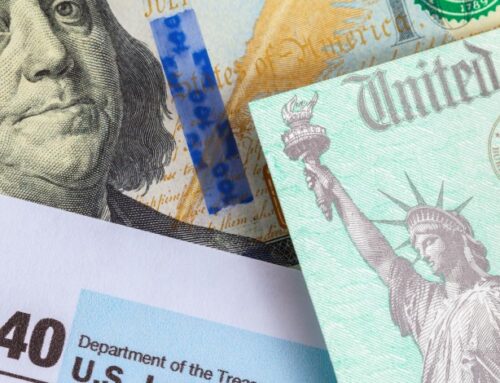Investing in home improvements that enhance energy efficiency not only reduces utility bills but also increases your property’s value. These upgrades can offer substantial long-term financial benefits. Energy-efficient improvements also contribute to a greener environment.
Here are 10 of the top energy-efficient home improvements that offer the best return on investment (ROI) and help you save money:
1. Air Sealing and Insulation
Proper air sealing and insulation are critical for maintaining a home’s thermal envelope. Insulation helps keep the heat inside during the winter and outside during the summer, enhancing the efficiency of heating and cooling systems. Air sealing and weatherstripping addresses leaks and drafts, preventing conditioned air from escaping and unconditioned air from entering the home.
Enhancing insulation and air sealing can also improve indoor air quality by reducing the infiltration of outdoor pollutants. What it offers:
- ROI: High (up to 100% or more)
- Cost: $1,500 to $5,000 depending on the extent of insulation or sealing needed
- Savings: Proper insulation can save up to 15% on heating and cooling costs, which translates to about $200 per year for the average homeowner.
2. Ceiling Fans
Ceiling fans are a cost-effective addition to any home looking to enhance energy efficiency. They not only provide immediate comfort but also contribute to significant energy savings over time. By improving air circulation, ceiling fans allow homeowners to rely less on heating and cooling systems, leading to lower energy bills.
With a low upfront cost and immediate impact on savings, ceiling fans are a smart addition to any home. What it offers:
- ROI: High (10%-25% annually)
- Cost: $100 to $500 per fan, including installation
- Savings: Ceiling fans can help reduce heating and cooling costs by up to 40%. With a ceiling fan, you can raise the thermostat up to 4 degrees without discomfort, saving additional money.
3. Energy-Efficient Appliances
Energy-efficient appliances are designed to perform the same tasks as their standard counterparts but use less energy. These appliances often come with advanced features that enhance their efficiency and user convenience. For example, ENERGY STAR-rated refrigerators, dishwashers, washing machines, and dryers use innovative technologies to minimize energy and water usage.
By upgrading to energy-efficient appliances, homeowners can reduce their overall energy consumption, leading to lower utility bills and a smaller environmental footprint. What it offers:
- ROI: Moderate to High (varies by appliance)
- Cost: Varies widely; $500 to $3,000 per appliance
- Savings: ENERGY STAR appliances can save the typical household about $450 a year in energy costs.
4. Energy-Saving Windows
Energy-saving windows are designed to minimize heat transfer, thus improving a home’s insulation. Features such as double or triple glazing, low-emissivity (Low-E) coatings, and gas fills between panes help reduce the amount of heat that passes through the windows. This results in less strain on heating and cooling systems, maintaining a more consistent indoor temperature.
By preventing drafts and reducing solar heat gain, energy-efficient windows enhance overall comfort and contribute to lower energy bills. They also help reduce noise pollution and protect furnishings from UV damage. What it offers:
- ROI: Moderate to High (up to 80%)
- Cost: $300 to $1,000 per window
- Savings: Energy-efficient windows can save 7% to 15% a year in energy costs depending on the local climate and the type of windows being replaced.
5. LED Lighting
LED lighting is one of the most cost-effective and impactful upgrades for improving energy efficiency in a home. LED bulbs consume significantly less power than traditional incandescent bulbs while providing the same level of brightness. They also have a much longer lifespan, reducing the frequency and cost of replacements. Additionally, LEDs produce less heat, contributing to lower cooling costs in warmer months.
The widespread adoption of LED lighting can lead to substantial reductions in overall energy consumption and a home’s carbon footprint. What it offers:
- ROI: High
- Cost: Approximately $2 to $8 per bulb
- Savings: Replacing incandescent bulbs with LED bulbs can save about $75 per year on electricity costs. LEDs use at least 75% less energy and last 25 times longer than incandescent lighting.
6. Low-Flow Fixtures
Low-flow fixtures, including showerheads, faucets, and toilets, are designed to use less water while maintaining performance. These fixtures reduce water consumption by limiting the flow rate, which can substantially lower water bills and decrease the demand on water heaters, further reducing energy costs.
Low-flow showerheads and faucets incorporate aerators to mix air with water, providing strong pressure while using less water. Low-flow toilets use innovative flushing mechanisms to reduce water usage per flush. Installing these fixtures is a simple yet effective way to conserve water and energy, contributing to environmental sustainability and cost savings. What it offers:
- ROI: High
- Cost: $10 to $100 per fixture; $100 to $1,500 per toilet
- Savings: Low-flow fixtures can reduce water usage by 30% to 50%, saving about $145 annually on water bills for a family of four.
7. Smart Thermostats
Smart thermostats offer advanced control over home heating and cooling systems, optimizing energy use based on the homeowner’s schedule and preferences. These devices learn and adapt to routines, automatically adjusting temperatures for maximum efficiency and comfort. Remote control via smartphone apps allows for adjustments on the go, ensuring the system isn’t running unnecessarily when no one is home.
Smart thermostats also provide detailed energy usage reports, helping homeowners understand and manage their energy consumption better. This precision in temperature control leads to significant reductions in energy waste and utility bills. What it offers:
- ROI: High (up to 100% within two years)
- Cost: $100 to $250
- Savings: Smart thermostats can save about 10% to 12% on heating and 15% on cooling, translating to about $130 to $145 annually.
8. Solar Panels
Solar panels convert sunlight into electricity, providing a renewable and sustainable energy source for a home. Installing solar panels reduces reliance on grid electricity, which can be especially beneficial in areas with high energy costs. Solar energy systems can significantly lower monthly utility bills and sometimes even generate excess electricity that can be sold back to the grid.
The initial investment in solar panels is offset over time through energy savings and potential government incentives or tax credits. Additionally, solar panels increase the home’s value and contribute to reducing carbon emissions, supporting environmental sustainability. What it offers:
- ROI: High (20% to 25% annual ROI)
- Cost: $15,000 to $25,000 before tax credits and incentives
- Savings: Solar panels can save homeowners about $1,500 annually on electricity bills, depending on the system size and local electricity rates. With incentives and tax credits, the payback period is often 6-8 years.
9. Tankless Water Heaters
Tankless water heaters, also known as on-demand water heaters, heat water only when needed, unlike traditional water heaters that store and continuously heat a large tank of water. This on-demand system eliminates the standby energy losses associated with keeping a tank of water hot, making it significantly more energy-efficient.
Tankless water heaters are compact, taking up less space, and provide a continuous supply of hot water, which is particularly advantageous for larger households. Their longer lifespan compared to conventional water heaters also makes them a cost-effective investment over time. What it offers:
- ROI: Moderate to High
- Cost: $1,000 to $3,000 including installation
- Savings: Tankless water heaters can be 24% to 34% more energy-efficient than conventional water heaters for homes that use 41 gallons or less of hot water daily, saving about $100 annually.
10. Upgraded HVAC Systems
Upgrading to a modern, energy-efficient HVAC (heating, ventilation, and air conditioning) system can significantly improve a home’s energy efficiency. Newer HVAC systems are designed with advanced technologies, such as variable speed motors, smart thermostats, and improved refrigerants, which enhance their performance while using less energy. These systems provide better temperature control, improved air quality, and quieter operation.
An upgraded HVAC system can also be more reliable and require less maintenance than older models. This investment not only reduces energy costs but also ensures a comfortable and healthy living environment. What it offers:
- ROI: Moderate to High (50% to 70%)
- Cost: $5,000 to $10,000
- Savings: Replacing an old HVAC system with an energy-efficient model can save up to $400 annually on energy bills.
AZCCU Can Help You Upgrade Your Home
If you’re updating your home for energy efficiency, a home equity loan can be the best way to secure the financing to make that happen. Accessing your equity to make upgrades is a good investment in your home.
When you’re ready to make your upgrades, consider a fixed-rate home equity loan or a home equity line of credit from Arizona Central Credit Union. We can get you the best terms to make your dreams come true. If you have any questions, contact us online or call (866) 264-6421.




